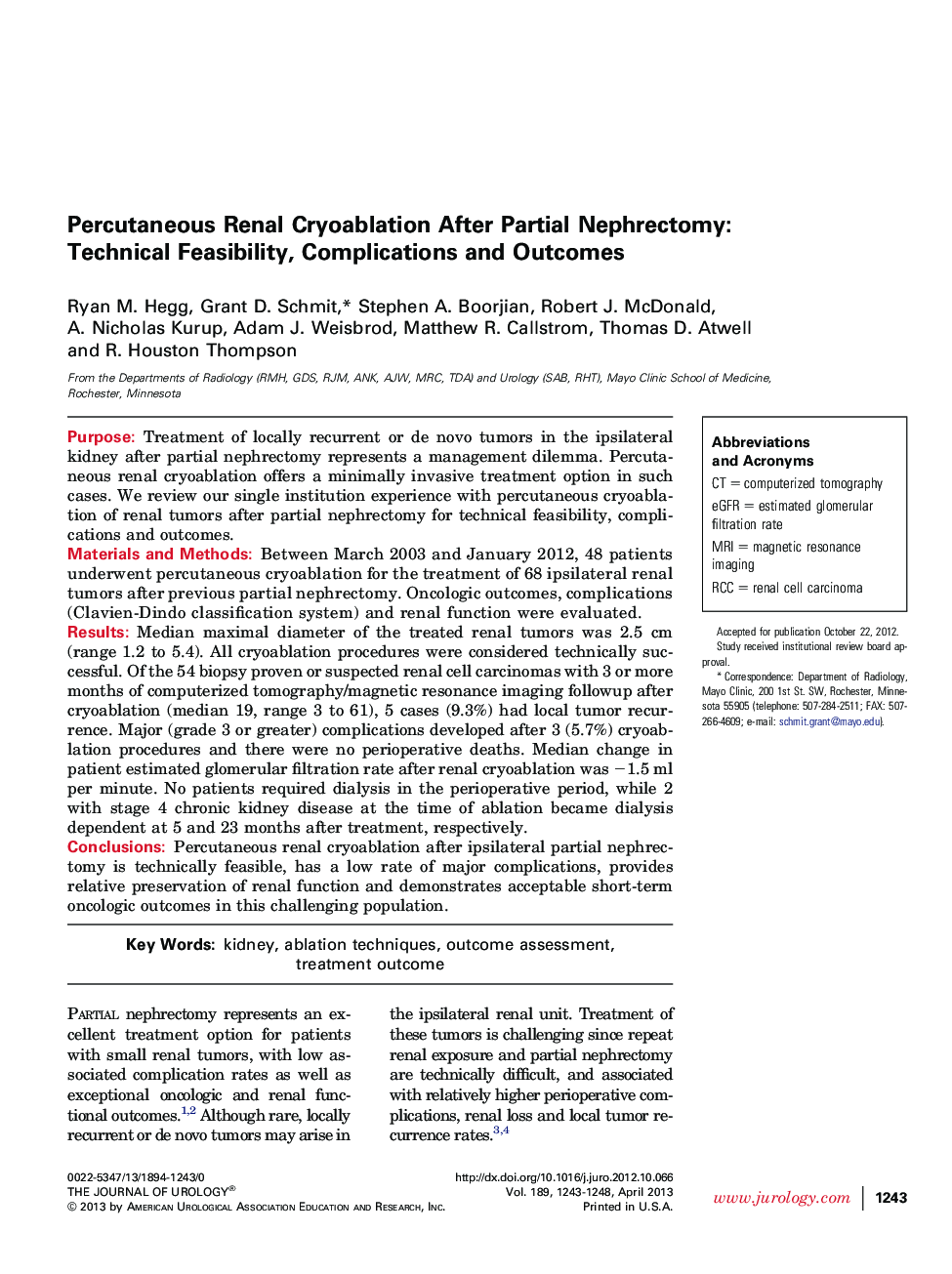| Article ID | Journal | Published Year | Pages | File Type |
|---|---|---|---|---|
| 3866765 | The Journal of Urology | 2013 | 6 Pages |
PurposeTreatment of locally recurrent or de novo tumors in the ipsilateral kidney after partial nephrectomy represents a management dilemma. Percutaneous renal cryoablation offers a minimally invasive treatment option in such cases. We review our single institution experience with percutaneous cryoablation of renal tumors after partial nephrectomy for technical feasibility, complications and outcomes.Materials and MethodsBetween March 2003 and January 2012, 48 patients underwent percutaneous cryoablation for the treatment of 68 ipsilateral renal tumors after previous partial nephrectomy. Oncologic outcomes, complications (Clavien-Dindo classification system) and renal function were evaluated.ResultsMedian maximal diameter of the treated renal tumors was 2.5 cm (range 1.2 to 5.4). All cryoablation procedures were considered technically successful. Of the 54 biopsy proven or suspected renal cell carcinomas with 3 or more months of computerized tomography/magnetic resonance imaging followup after cryoablation (median 19, range 3 to 61), 5 cases (9.3%) had local tumor recurrence. Major (grade 3 or greater) complications developed after 3 (5.7%) cryoablation procedures and there were no perioperative deaths. Median change in patient estimated glomerular filtration rate after renal cryoablation was −1.5 ml per minute. No patients required dialysis in the perioperative period, while 2 with stage 4 chronic kidney disease at the time of ablation became dialysis dependent at 5 and 23 months after treatment, respectively.ConclusionsPercutaneous renal cryoablation after ipsilateral partial nephrectomy is technically feasible, has a low rate of major complications, provides relative preservation of renal function and demonstrates acceptable short-term oncologic outcomes in this challenging population.
